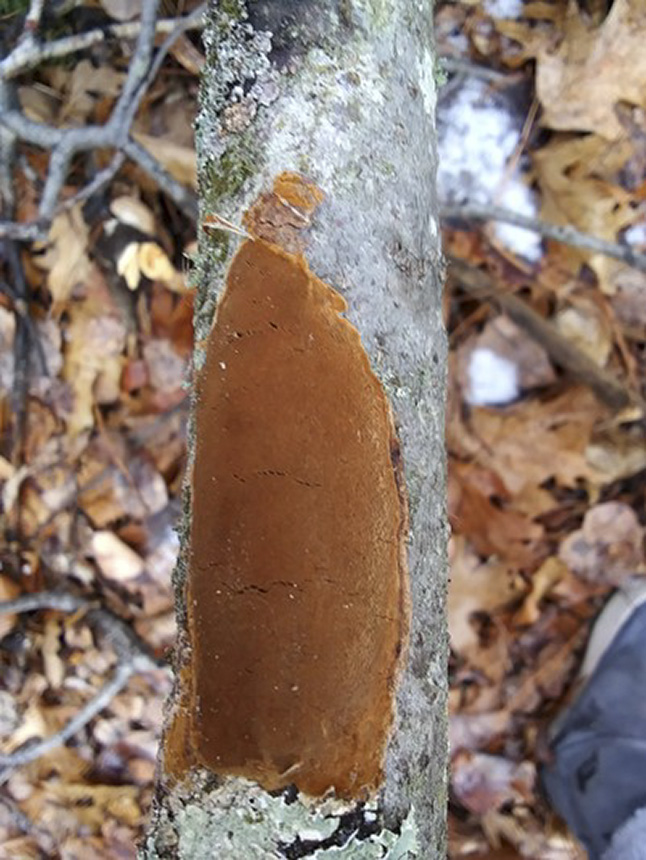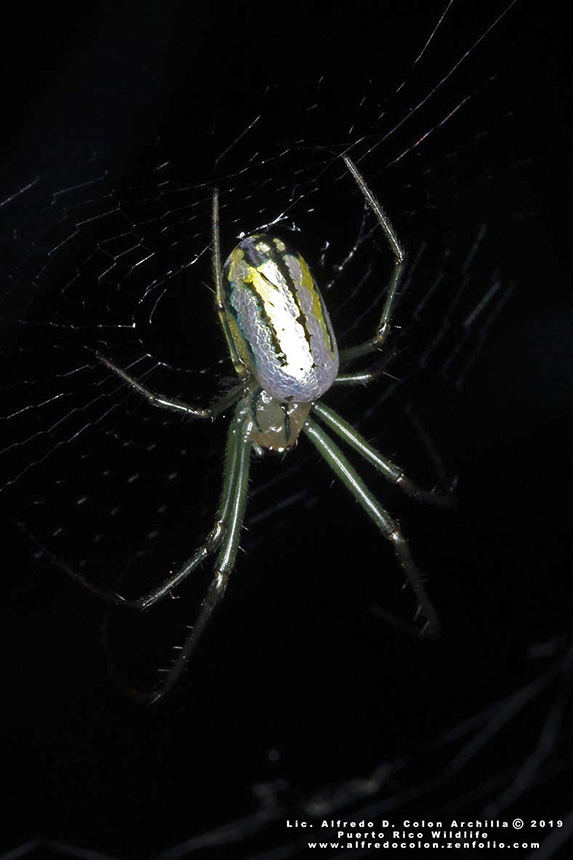
Elbowpatch Crust (Fomitiporia punctata) is one of many fungi that cause a disease known as canker rot. Cankers are open wounds or lesions on the trunk or a branch. With this species, the canker is takes the form of a brown “elbow patch.” It spreads flat on the surface of the substrate with no stalk or cap (resupinate). The outer (pore) surface is yellowish-brown or grayish-brown. The margins are yellowish-brown at first, eventually becoming black and cracked.
Elbowpatch Crust is a common and widespread wood decaying fungus. It occurs worldwide on every continent except Antarctica. In North America it occurs east of the Great Plains and in the Pacific Northwest. It is found in deciduous and mixed forests and woodlands. It grows on many hardwood trees and shrubs, including willow, ash, maple, plum, buckthorn, mountain ash, Siberian peashrub, and common lilac. It is usually seen on fallen trees and branches, but will also grow on live trees and shrubs. It causes white rot of sapwood and in some species also of heartwood. It can weaken a tree making it a hazard to buildings and people.

